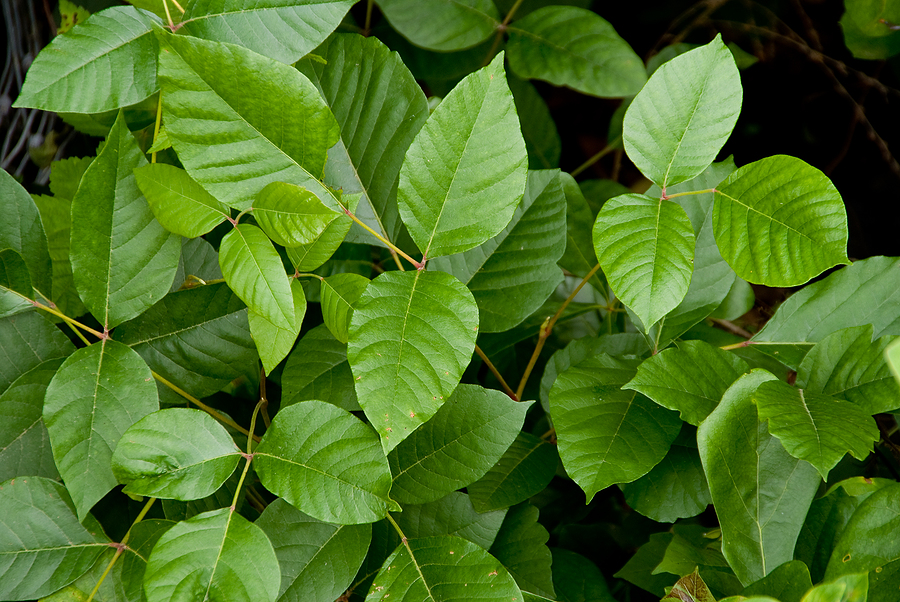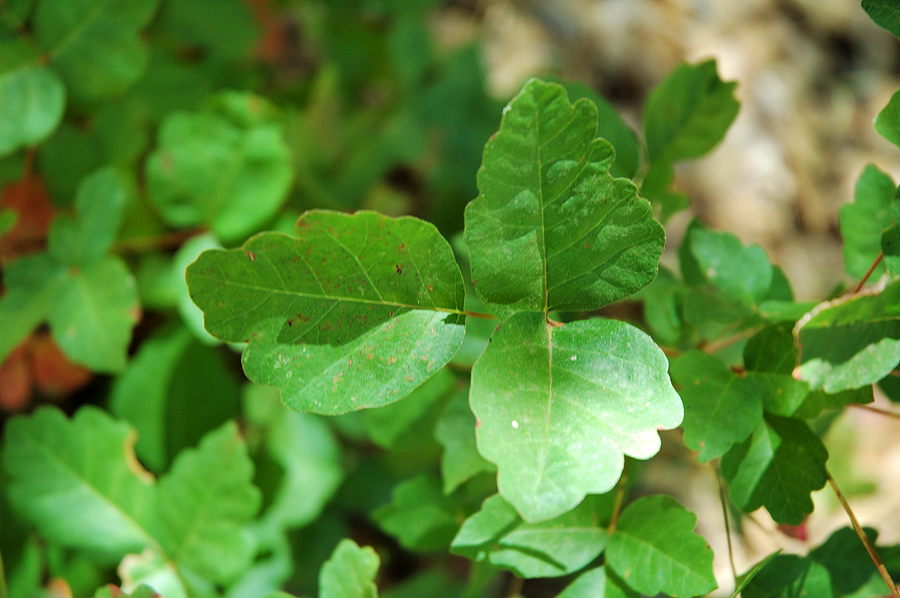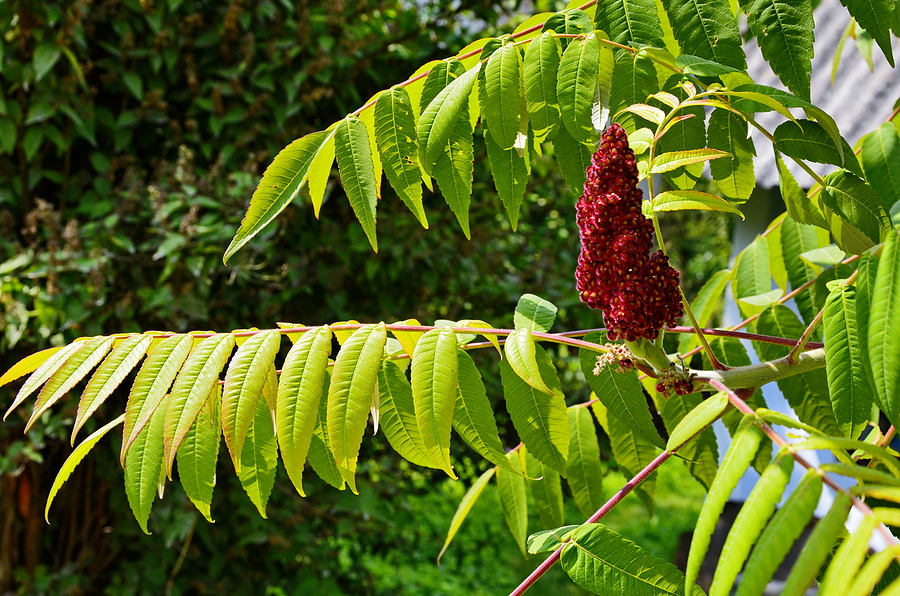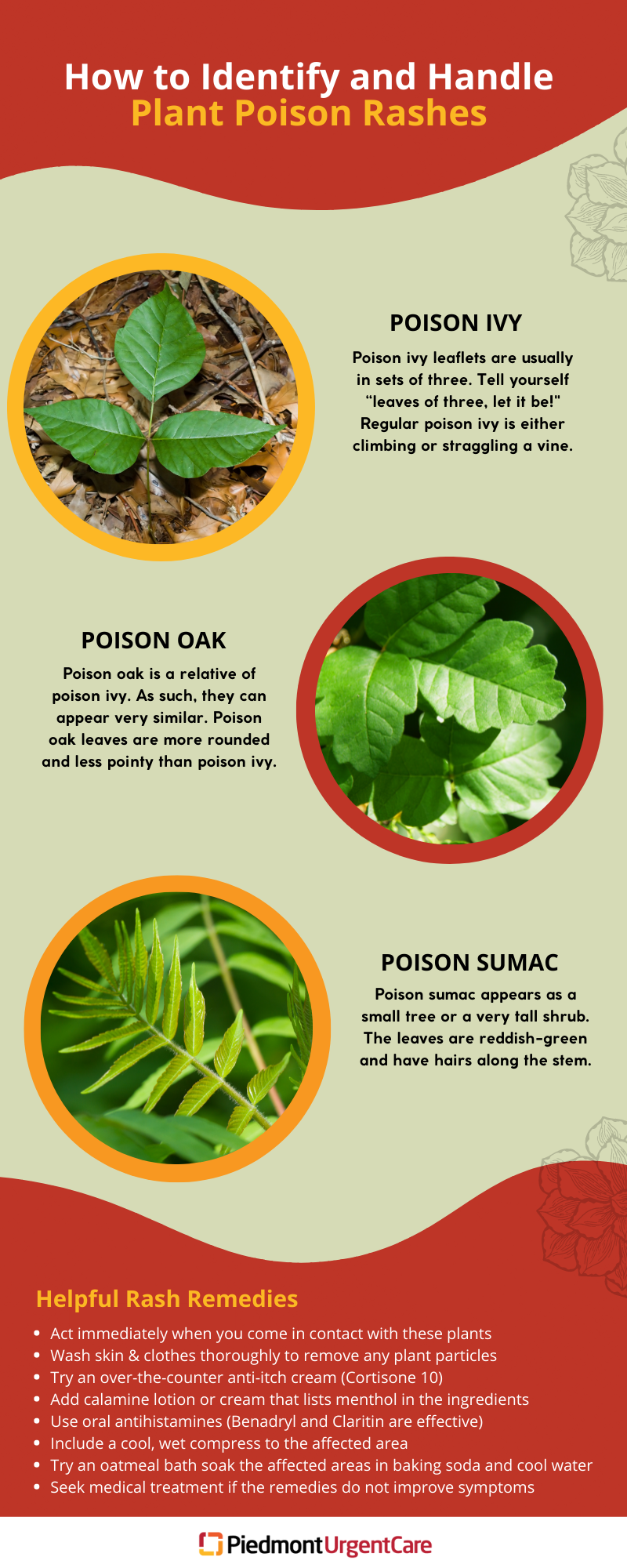Outdoor adventure awaits this time of year. With adventure comes old adversaries: poison ivy, oak, and sumac. Do you know how to identify these poisonous plants? Stay safe this season and learn how to identify different poisonous plants, as well as what to expect should you come in contact and how to treat their rashes.
Poison Ivy

Let’s start with poison ivy. Only about 15% of people are resistant to any reactions, while about the same percentage of people will have severe reactions.
Plant identification:
- Leaflets in sets of three: tell yourself “leaves of three, let it be!”
- The side leaflets have shorter stalks than the middle leaflet
- Depending on the type, the leaves’ edges may be smooth or toothed
- Leaf surface is either glossy or dull
- Regular poison ivy is either a climbing or straggling vine
- Western poison ivy presents as a sprawling shrub
- Flowers are greenish with 5 petals, close to 3mm in diameter, and grow in loose branched clusters
Rash identification:
The rash typically appears in a straight line due to the way the plant brushes across the skin.
Poison Oak

Poison oak is a relative of poison ivy. As such, they can appear very similar. There are a few differences that set them apart.
Plant identification:
- Similar to poison ivy, its leaves grow green with differing amount of red color throughout the year
- Leaves grow in clusters of 3 (“leaves of three, let it be”)
- Leaves are more rounded and less pointy
- Leaves have a hair-like, textured surface
- Grows as a low shrub in Southern and Eastern states
- Grows like long vines or tall clumps on the West Coast
Rash identification:
This rash may appear red and streaky, or it may appear as red bumps that turn into large blisters.
Poison sumac

Poison sumac appears slightly different from poison ivy and oak. It doesn’t look as menacing, which makes it easily touched and underestimated.
Plant identification:
- Appears as a small tree or a very tall shrub
- Leaves grow in paired leaves, with groups of about 7 to 13 total leaves
- Leaves are reddish green with whitish-green berries (which are actually similar to sumac)
- Common in the eastern U.S.
Rash identification:
This rash may appear red and streaky, or it may appear as red bumps that turn into large blisters.
Treatment for Urushiol Rashes
If you couldn’t avoid poison ivy, oak or sumac…you’ve likely come into contact with the common culprit that causes their rashes: urushiol. These poisonous plants aren’t the source of the itchy attack: the long-lasting oil coating them, urushiol, is what causes a reaction on your skin. It can take anywhere from a couple of days to a couple of weeks for the reaction to occur, but the results (and treatment) are usually the same.
Your best bet is to act immediately. Wash your skin and clothes thoroughly, then take medicative measures. Start with an over-the-counter anti-itch cream (like hydrocortisone) for the first few days. Stay consistent with your application and add in a calamine lotion or cream that lists menthol as an ingredient. This will help with itchiness and prevent the rash from intensifying. Next, grab an oral antihistamine to help you sleep better and itch less. Benadryl is common and effective, but Claritin and other loratadine medications will help you avoid drowsiness.
More natural solutions include a cool, wet compress against the affected area in intervals of 15 to 30 minutes throughout the day. Take a bath with oatmeal-based products and soak the affected areas in cool water with baking soda.
Common Misconceptions: Contagion and Rash Spreading
Contrary to what many people think, poison ivy, oak, and sumac won’t spread based on touch! That’s because the rash is triggered by the urushiol itself, so only surfaces with the oil on it will cause additional rashes. As soon as exposure is confirmed, it’s extremely important to wash any surfaces suspected of contact with the urushiol oil. This can be done with water. You have a small, 10-minute window (upon initial contact) to avoid a rash forming altogether, so be quick! If you have questions or need a medical consultation regarding a questionable rash, visit your local urgent care. We’re open 365 days a year with extended hours to help whenever you need it most. Walk ins are always welcome, or book ahead to spend less time in the waiting room.


